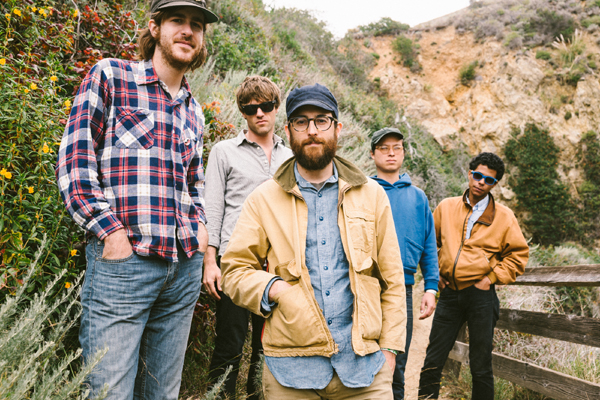
It’s sometimes hard to believe Woods, the Brooklyn psych-rock mainstays, has nine albums to their credit. After all, they’ve only been around since 2005. But that’s the type of band Woods is, constantly finding themselves carving out album’s worth of songs in the studio all the while expanding their sound on stage.
We caught up with guitarist Jeremy Earl to talk about their new output, City Sun Eater in the River Light, as well as their upcoming Woodsist Festival later this summer held in Big Sur, CA.
Let’s start with the new record. I remember reading somewhere you said that African music and rhythms really seeped into this album. Anything specific you could point to?
With a couple of songs in particular, it kind of happens with every Woods record. Something that I am listening to casually sort of seeps in as an influence and I guess with this one, on our last tour, we had been playing a lot of those Ethopiques compilations and stuff like that so the vibe just kind of felt right, and when we started writing and jamming for the record, that vibe just kind of came out.
There’s definitely a lot of layers and rhythms to these songs—most notably “Sun City Creeps” and “The Take” that both feel like they were carefully constructed in the studio.
For “Sun City Creeps,” the backbone of that was basically worked out beforehand, before we got into the studio, and that’s how we’re kind of playing it live. So all of those elements are there, it’s just like, we’re working with a lot more stuff than we’re used to, like the horns, and some keyboards and stuff like that. We’re basically doing like that exactly the way it’s recorded live. So that one was pretty straight forward as far as overdubs went.
The basic tracks were just tracks and then we kind of laid down some other stuff but not much studio experimentation. But “The Take” on the other hand is the complete opposite where it started off super minimal. I think we laid down a bongo track first and bass and then was the idea for the song basically, and then kind of worked out the little changes in the studio and just kind of let the studio environment kind of inspire us to try different things and do a bunch of overdub.
*Would you say most of the songs on the record kind of follow that pattern or more like “Sun City Creeps”, where it was kind of straight forward and you went through it? *
Yeah, for the most part we had it all worked out and tracked the basic tracks really fast. In the studio we’re kind of, me especially, I kind of, I just get like, I’d be on top of an idea and want to try new things, do different percussion or try a different guitar solo or you know, just stuff like that, I’m constantly getting inspired, and sort of like work really quickly when we’re in the overdub stage. So there’s always going to be that element to the songs where it’s just experimenting in the studio.
Experimentation has always been at the core of what you do in the studio, right?
Totally, yeah. I’m kind of a sucker for that kind of stuff and that’s just the most fun part of recording.
This core band has been together for a couple of records now, how did that continuity help the cohesiveness of this album?
I think the basic vibe was there since we’ve been touring off of the last record, With Light and with Love, for the last two years with this band that went into the studio, so we’re setting a foundation for those basic tracks but, no, as far as experimentation and stuff goes, everybody’s on the same page with it. We just sort of shoot out an idea like, “Hey, why don’t you try this kind of thing?” You know, it’s pretty easy to get done.
For all the experimentation we’ve spoken about, there’s still some classic “Woodsy” sounding tunes on here, “Morning Light” in particular.
You can say it has the classic kind of Woods sound, but it was sort of a different kind of song structure for us. But it’s hard, I guess no one probably knows that except for us. But it sounds the same. You know, to us, there are little differences where it’s different enough to us.
The way I look at it is we try to record a bunch of songs and then we pick the most solid songs and so that one just stood out to me as a solid song. We always try to go with the good ones.
That’s a sound strategy. Let’s shift to the live setting.
For the most part we sort of work out a set and get a flow going and then the experimentation stuff comes in a little bit later in the tour when we start to really get a feel for it. With this one, with the current set that we’re doing, the majority of it is the new record and the last record, with a couple of older tunes kind of sprinkled in. “The Take” has been our moment to sort of stretch out. The end of that has, on this last tour, I guess we sort of started to find a rhythm and some spaces in finding some new experimentation and jamming on that. So that one is really good so we can just stretch out, but the other one for the most part sort of just like, pretty straight up to what we’ve recorded.


No Comments comments associated with this post